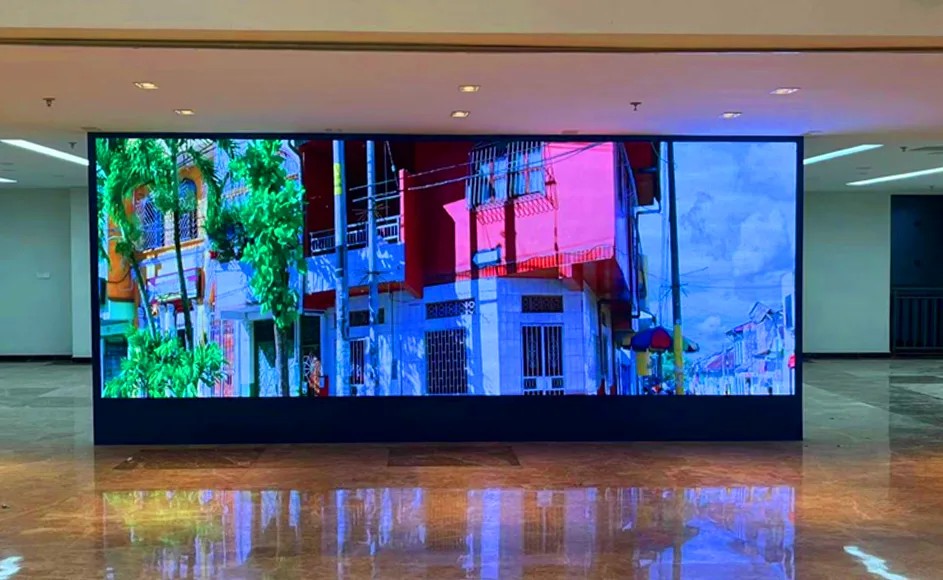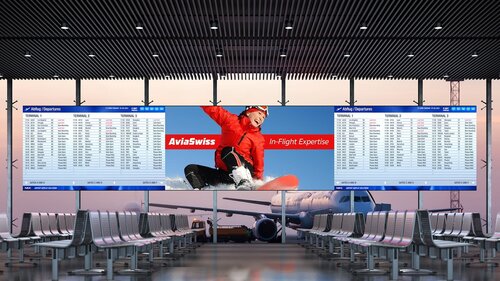
Indoor LED display installation steps and methods
Introduction
Make a structure based on an example of an existing small screen that is being produced. Buy 4 pieces of 4*4 square steel and 4 pieces of 2*2 (6 meters long) from the market, first use 4*4 square steel to make a field frame (can be customized according to your own situation), the size of the large frame is 4850mm*1970mm, because the size inside the small frame is the size of the screen, and the square steel is 40mm, so it is this size.
To install an indoor LED display, the commonly used method is to buy frames, modules, cables, power supplies, control cards and other materials to assemble the LED display by yourself, so how to assemble the modules into a whole large LED screen , and use it normally? The installation steps are explained in detail below.
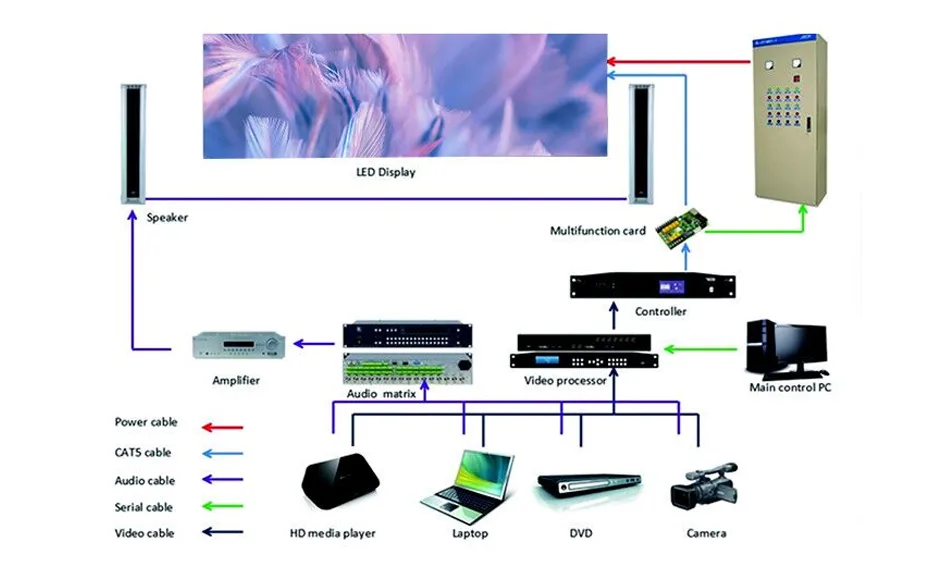
Let’s take the 4800mm*1920mm LED display as an example
First calculate the size:
The size of the full-color modules used in the unit board is 320*160mm, 15 pieces long and 12 pieces high. This color screen shares 180 modules. 320*15=4800mm, 160*12=1920mm,
The net area is 4800mm*1920mm plus 10mm extra head (2mm is used to remove the stainless steel package, and the joint between the board and the frame is 5-8mm. The upper and lower heads can be left on the top and cannot be seen from the front), frame size It is 4810mm*1930mm.
PH2.5 indoor module length 320mm
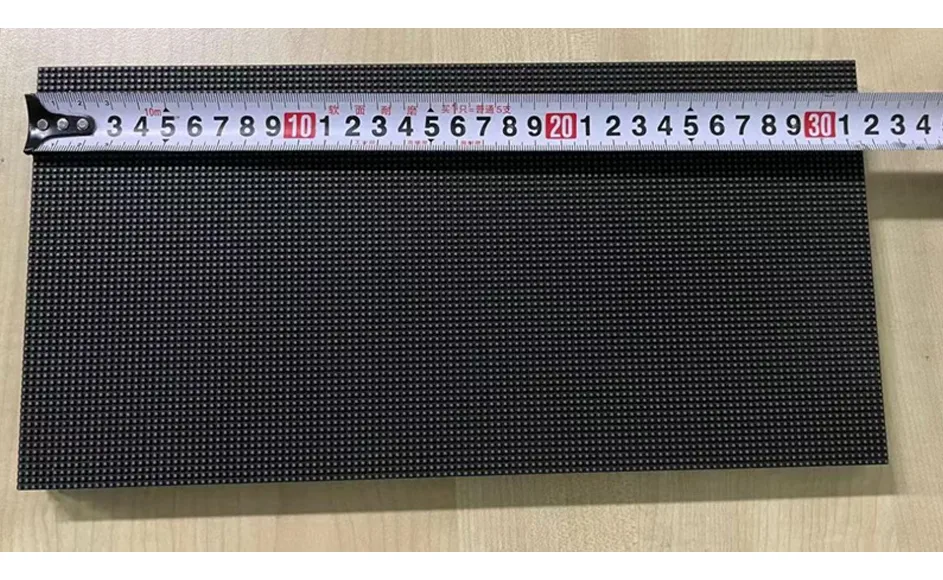
PH2.5 indoor module width 160mm
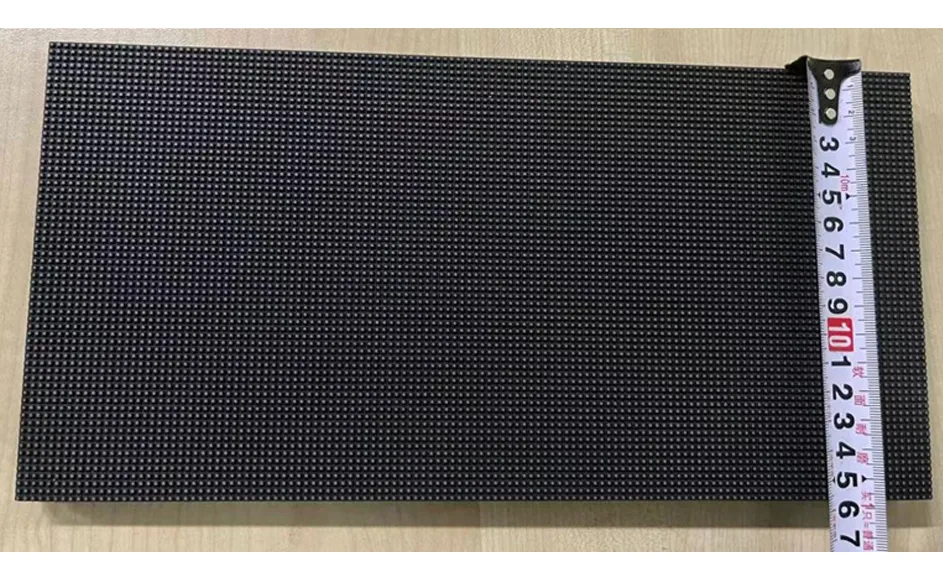
PH2.5 indoor module back
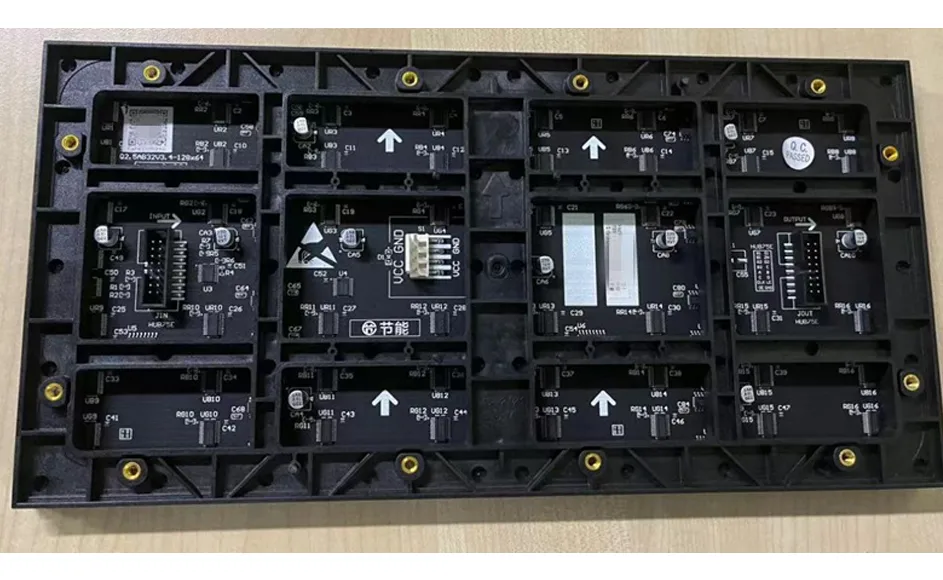
1. Make the border
Make a structure based on an example of an existing small screen that is being produced. Buy 4 pieces of 4*4 square steel and 4 pieces of 2*2 (6 meters long) from the market, first use 4*4 square steel to make a field frame (can be customized according to your own situation), the size of the large frame is 4850mm*1970mm, because the size inside the small frame is the size of the screen, and the square steel is 40mm, so it is this size.
When welding, use a steel square to weld a 90-degree angle as much as possible. The size in the middle doesn’t matter. After the cross-shaped frame is completed, start to weld small square steel on it. The internal size of the small square steel is 4810mm*1930mm. The four corners and the middle part are cut into small pieces with the remaining 4*4 square steel and welded on to facilitate the cladding of stainless steel.
After the small connecting frame is completed, start to weld the back strips. Use the plate to measure and weld the first two pieces. After finding the size, you can weld all the way down. The back bar is 40mm wide and about 1980mm in length, just weld both ends. The welded frame (the back is pictured) can be installed in the hall. Make two angle steel hooks on the top of the wall.
Welded back strip
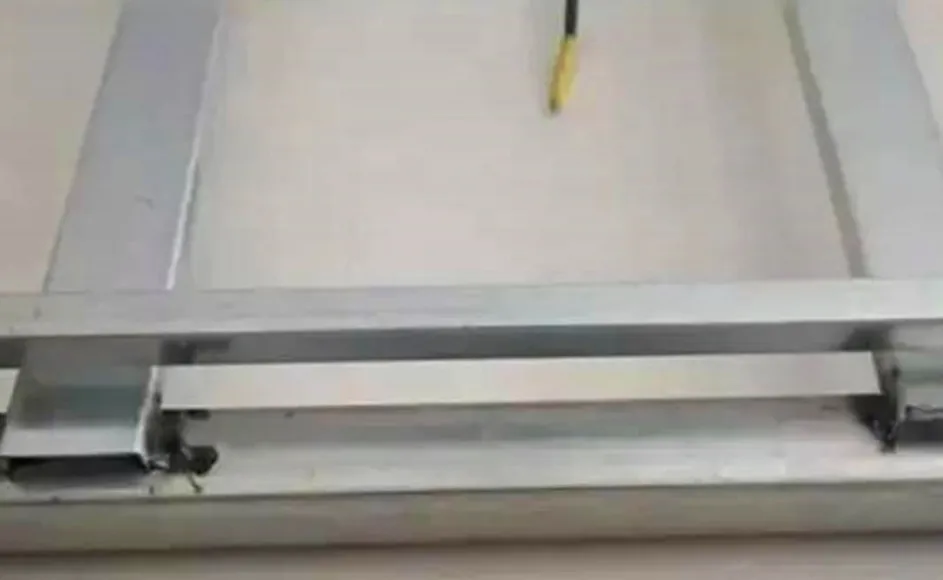
Square steel back bar
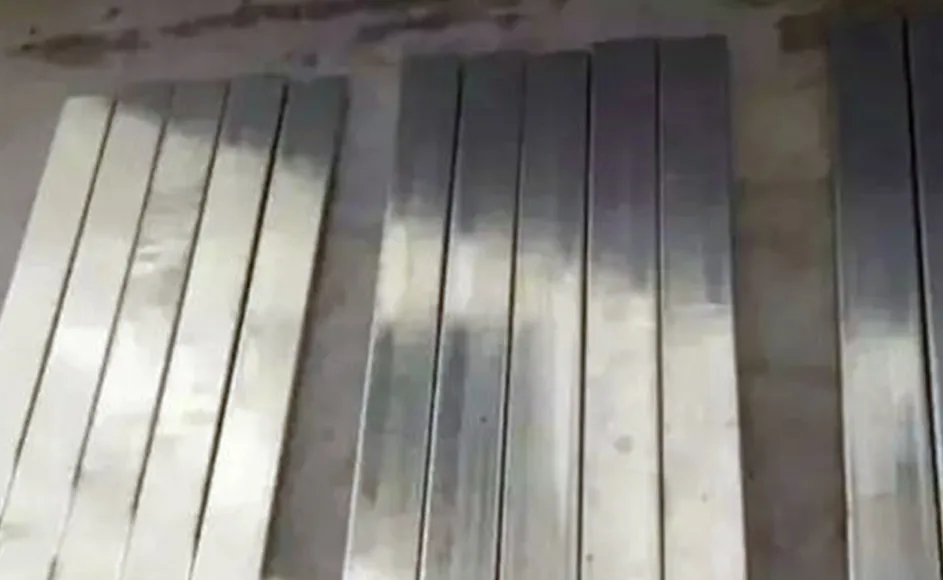
Fix the welded square steel at the screen installation position
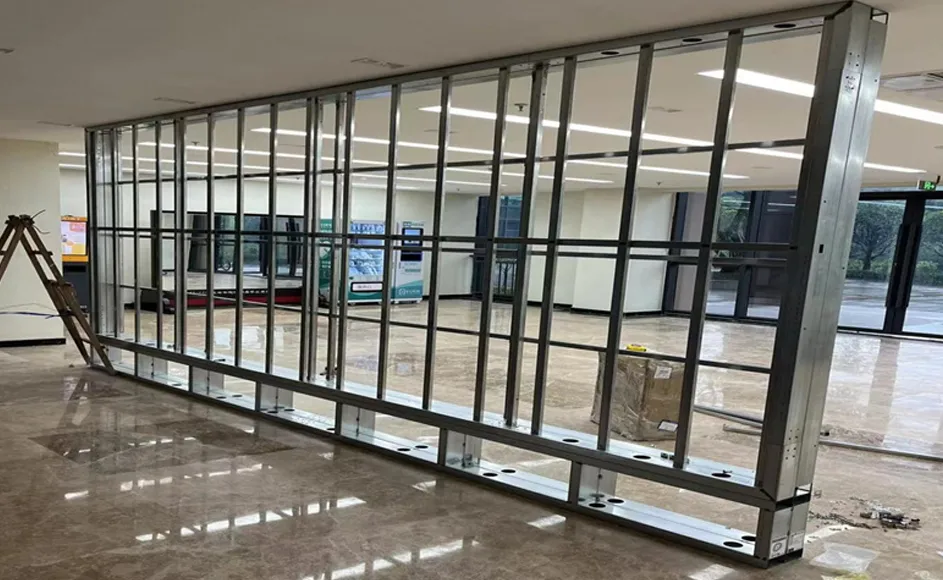
2. Install power supply, control card and module
After the shelf is hung, leave a gap of about 10mm around, because the indoor screen cannot be made into a box frame with a fan, and only the gap of 10mm can be used for simple ventilation. When installing the power supply, first connect the two finished power cables. The positive and negative poles of the 5V output must be optimistic, otherwise the power cable, module and control card will be burned. Each finished power cord has two connectors, so that each power supply can carry four modules. Then the power supply is connected by 220V. Use 2.5 square annealed copper wires to string each row together. Finally, a set of 220V power cables is connected to the open terminal of the power distribution cabinet. The cables from the power distribution room to the LED display power distribution cabinet must be arranged before the screen is installed. After the power supply is connected, the control card is installed. The control card here uses a synchronous receiving card. For the layout of the entire power supply and control card, the LED display has a “Power Supply and System Wiring Diagram” before leaving the factory. As long as the wiring diagram is strictly followed, there will be no mistakes. General engineers themselves can also estimate the wiring method based on the number of power supplies and cards.
3. Connection between receiving card and module
Here, each card has three columns of modules, a total of 36 boards, so that one card is installed in every three columns, and the card is powered by 5V from the nearest power supply. Pay attention to the positive and negative poles, and then connect the five cards with a network cable. , the network port next to the power connector is the input port, the right is the first card, which is also the head card, the input is connected to the Gigabit network card of the computer, and the output network port is connected to the input port of the second card, the second card The output port of the card is connected to the input port of the third card, so until the last card, the fifth card, the input is connected to the output of the fourth card. The output port is empty.
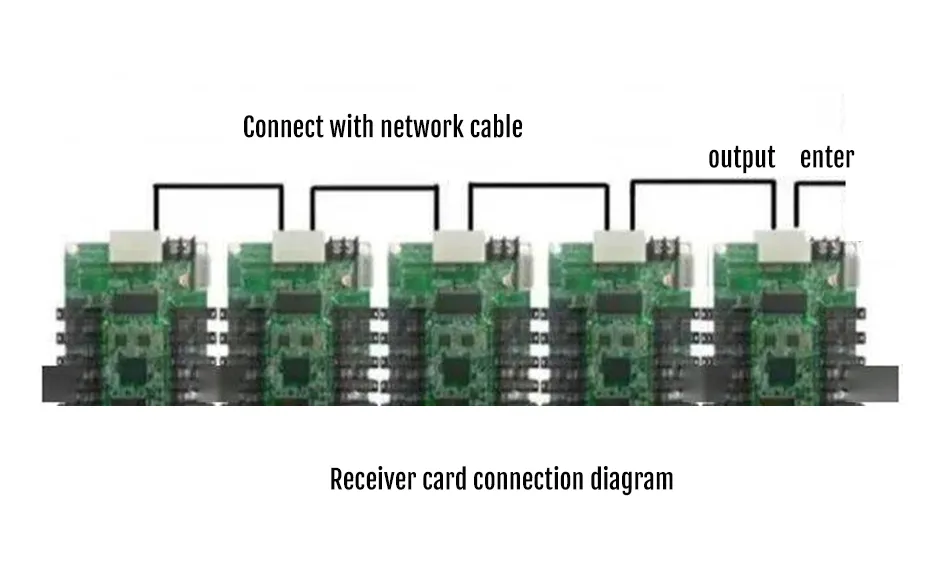
4. Stainless steel edging
Stainless steel edging is required before installing the module. This is just for good looks. Some customers also require it to be installed. When doing stainless steel edging, increase 5mm according to the size of the steel structure. The purpose is to facilitate the installation of stainless steel edging and prevent it from being stuck. Stainless steel edging. Here, because the size of the screen is small, we installed the stainless steel edging in advance, and sometimes the stainless steel edging can be installed after the screen is installed, but it should be noted that the first row at the bottom must be level.
5. Install the module
After buckling the stainless steel side, start to install the module. The normal sequence of module installation: install from the bottom to the top or from the middle to both sides. There are also many controversies about this installation method. The main purpose of installing from the bottom is to keep the horizontal and vertical within the normal control range, especially when the screen area is large, it is easier to get out of control, especially the requirements for small spacing are higher, and there is a little gap If the requirements are not met, fine adjustments are required. Engineers who have installed small pitches know that even if the precision mold comes out of the module or box, there are still errors. The misalignment of a few wires will lead to the misalignment of the entire row.
Secondly, the installation from the middle to both sides can be divided into two groups or even four groups of people to divide the work and save installation time. Even if there is a problem of installation dislocation, it will basically not affect the progress of the other group of personnel.
Install the cable that comes with the module according to the drawing. The short cable is used to connect the modules. The long cable from the control card to the module should be installed according to the length of the line. The top and bottom are used. The cable is longer, about 1.5 meters long here.
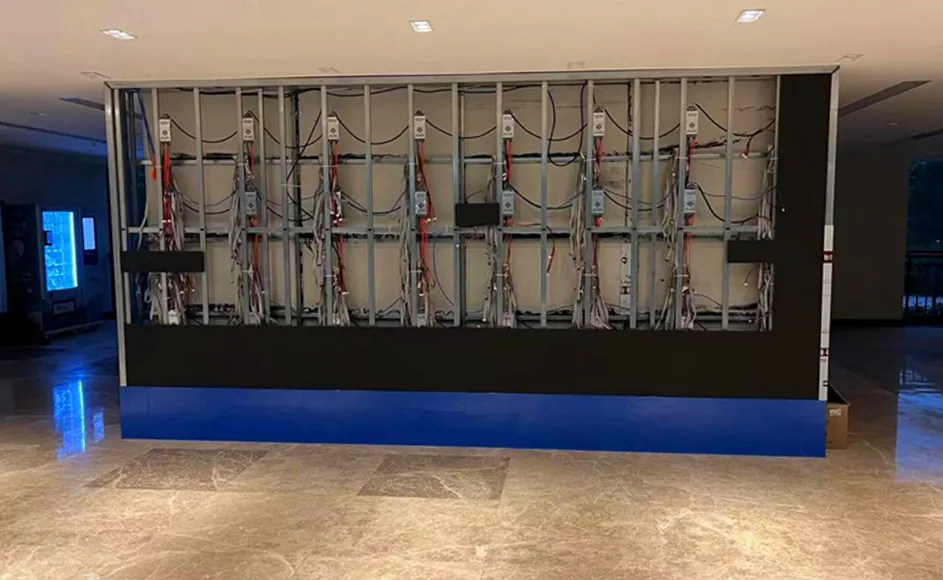
Install LED modules on square steel
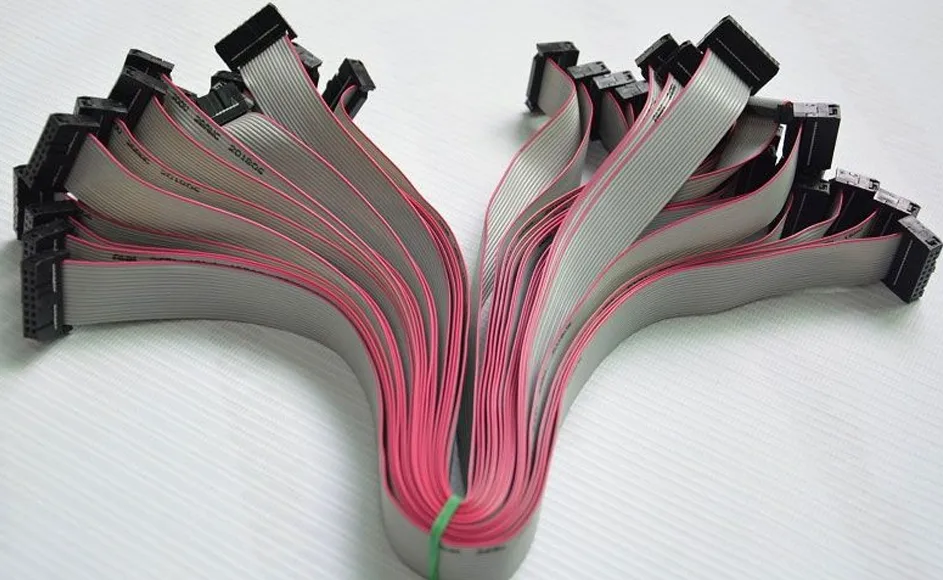
LED module long cable
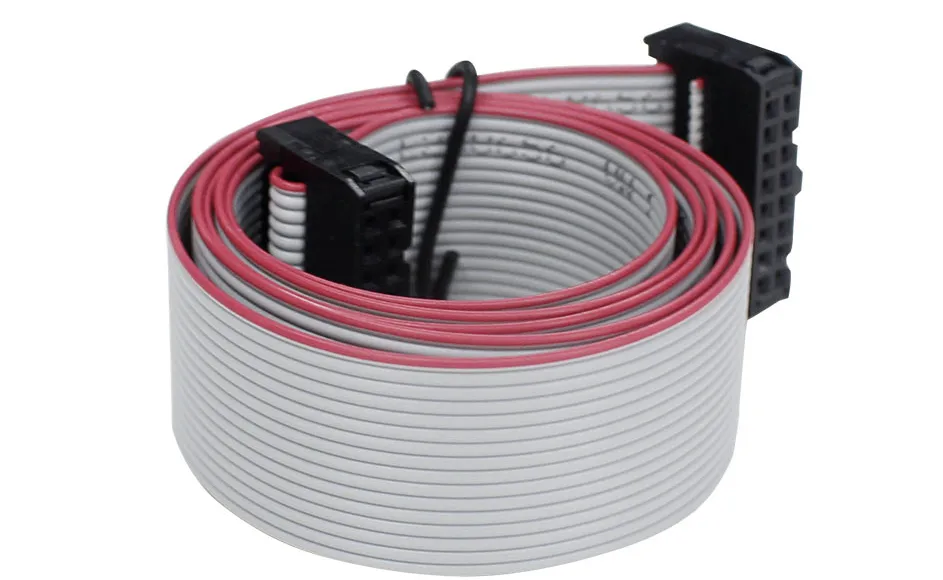
LED module 16P cable
It is best to bring your own tools. If the cable is crushed, cut a new section, press both ends, and then install the fixed clips. Sometimes the back strip blocks the uneven module, and the cable card has to be cut off when installing it. When the cable is plugged into the module, the red edge is upward, and the arrow of the module is also upward at the same time. For modules without arrows, the printed words on the module must be upward. The connection between the modules is that the input at the front of the module is connected to the output at the back of the previous module.
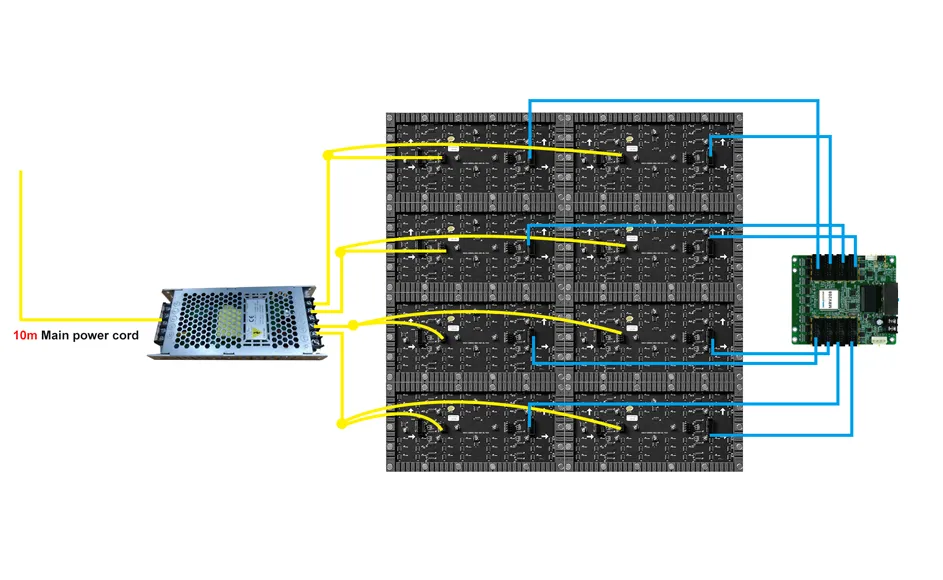
6. Adjustment
After installing one card of the four-line module, turn on the power and test it. If there is any problem, solve it in time, because if you install another set, it will cover this card and cannot be tested. In addition, if you continue to install, you will not be able to find the problem in time. If all are installed Then, to find the problem, and remove the installed modules, the amount of work will be much larger.
There is a test button on the control card. You can use this method to test first when the power is on. If the installation is normal, the screen will display red, green, blue, line, field, and point information in sequence, and then test the control computer again, mainly To test whether the network cable communicates normally. If it is normal, install the next group until the installation is complete.
